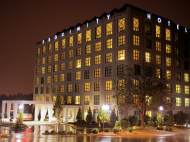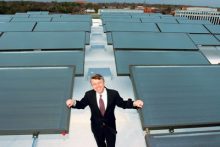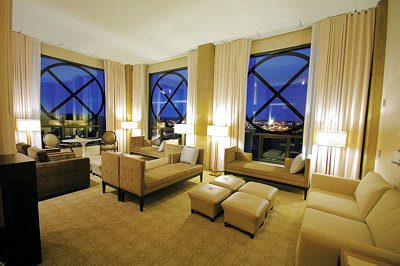Green architecture – Proximity Hotel
 In our previous articles we’ve been writing about buildings designed mostly for public use. In this article we’re going to write about a hotel that earned LEED Platinum certificate without losing any functionality and guest comfort. Proximity Hotel and Print Works Bistro have been awarded LEED Platinum by the U.S. Green Building Council a year ago, thus becoming the first hotel in the USA with that certification. LEED certification covers energy use, lighting, water and material use as well as incorporating a variety of other sustainable strategies.
In our previous articles we’ve been writing about buildings designed mostly for public use. In this article we’re going to write about a hotel that earned LEED Platinum certificate without losing any functionality and guest comfort. Proximity Hotel and Print Works Bistro have been awarded LEED Platinum by the U.S. Green Building Council a year ago, thus becoming the first hotel in the USA with that certification. LEED certification covers energy use, lighting, water and material use as well as incorporating a variety of other sustainable strategies.
Dennis Quaintance, the CEO and CDO (Chief Design Officer) of Quaintance-Weaver, is obviously delighted. “When we started the design process four years ago, I would have never believed that we could use 39% less energy and 33% less water without one iota of compromise in comfort or luxury and with minimal additional construction costs,” says Quaintance. “It just goes to show what a determined team can accomplish if they use common sense and get a little bit of help from the sun.”
The sun’s energy heats hot water with 100 solar panels covering the 370 square meters of rooftop (enough hot water for a hundred homes). This heats around 60% of the water for both the hotel and restaurant. Geothermal energy is used for the restaurant’s refrigeration equipment, instead of a standard water-cooled system, saving significant amounts of water. The rigorous testing for a variety of water saving products paid off. Water usage has been reduced by 33% by installing high-efficiency Kohler plumbing fixtures, making the hotel and restaurant use 7.5 million liters of water less than before during the first year.
Quaintance collaborated with his subcontractors on every little detail and personally tested most products. “We tested so many different toilets at home that our children were anxious to see what they called the ‘commode du jour’,” he says. “We finally found one that works wonderfully and uses 1 liter less with each flush, and it did not cost one cent more than a conventional toilet.”
Regarding the build materials, 46% were sourced regionally and most of the furniture was made within 28 kilometers of the site. The bar in the restaurant was made from salvaged, native walnut trees brought down by storm or disease. Chip Holton, the artist-in-residence for the project, created 500 pieces of art for the guest rooms while working in a temporary studio adjacent to the hotel. This eliminated the need for packaging materials and shipping, lowering the environmental impact of the artwork. Low-emitting volatile organic compound (VOC) paints, adhesives, carpets, etc reduces indoor air contamination.
“I’ve come to believe that it is an urban legend that employing sustainable practices with new construction is too expensive,” concludes Quaintance. “We are very happy with the results, including the costs and returns, of everything that we did. It’s not easy – but it’s not hard. And it’s definitely worth it.”
There are many more features as first Regenerative Drive model of the Otis’ Gen2 elevator, which reduces net energy usage by capturing the system’s energy and feeds it back into the building’s internal electrical grid. They even plan to add a vegetated rooftop, which will be planted on the restaurant in order to reduce the “urban heat island effect.” In other words, the green roof reflects the heat, thus reducing the amount of energy needed for refrigeration and/or air conditioning. It also slows the rain runoff and insulates the rooftop, keeping the building cooler overall. You can read more about all the features this great hotel has here (PDF).











Leave your response!